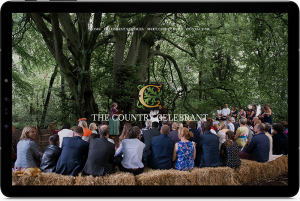Exploring the Rich History of Celebrancy: Past Examples of Celebrants
The Ancient Origins of Celebrancy
The practise of celebrancy has its roots in ancient civilisations, when individuals played key roles in the organisation and administration of a variety of different ceremonies. Let’s look into the fascinating histories of some past celebrants who have had a role in shaping the celebrancy practise over the course of time. See past examples of celebrancy on celebrant website.
Egyptian Priests and Priestesses
In ancient Egypt, priests and priestesses had an important role in society by acting as celebrants for various religious rites and rituals. This gave them a prominent place in the society. They were in charge of carrying out sacred rites, such as making sacrifices to the gods, executing rituals to cleanse themselves, and conducting burial ceremonies. These highly respected members of the community were an integral part of the effort to keep the community’s spiritual health in good standing.

Druidic Ritual Leaders
An ancient religious group in Celtic culture known as the Druids retained a deep respect for the natural world and were famous for their one-of-a-kind celebrating rituals. During sacred rites and festivals, the leaders of Druidic rituals served in the role of celebrants. They held ceremonies to pay homage to the passing of the seasons, significant celestial happenings, and significant personal milestones. It was believed that the celebrants who practised Druidry served as a link between the natural and supernatural worlds.
Roman Pontiffs and Augurs
In ancient Rome, the practise of celebrancy was intricately connected to both the religious and political aspects of daily life. The Roman pontiffs were high-ranking priests who oversaw religious activities, such as festivals and sacrifices. They were in charge of the Roman Catholic Church. They were essential to preserving the favour of the gods and the prosperity of the Roman empire, both of which depended on their actions. An other type of celebrants known as augurs interpreted the intentions of the gods by observing natural signs and omens and drawing conclusions from those observations. https://www.dynamicwebdesign.com.au/our-services/web-design-business/
Medieval Clergy
Throughout the Middle Ages, the clergy wielded a tremendous amount of power in determining how religious rituals and rites of passage were carried out. Baptisms, weddings, and funerals were all rituals that required the assistance of celebrants like priests and bishops to properly carry out. They were in charge of sanctifying significant life events and giving the community spiritual direction, both of which were their responsibilities. The celebrants of the middle ages adhered to their religious and cultural conventions while also adjusting to the changing expectations of society.
Japanese Shinto Priests
Shinto, Japan’s indigenous religion, has a long and illustrious history of ritual and ceremony. Shinto priests, also known as kannushi, have historically played significant roles in the organisation of a variety of rites. Shinto priests play the dual role of celebrants and keepers of tradition. They are responsible for everything from purification rites at shrines to elaborate celebrations commemorating the harvest or honouring ancestral spirits. They are essential in establishing a connection between the community and the divine and in ensuring the continuation of cultural traditions.
Native American Shamans
Native American societies have a wide variety of spiritual practises, many of which are conducted under the direction of shamans, medicine men and women, or both. These individuals took on the role of celebrants during significant rituals and ceremonies, such as those involving healing, vision quests, and initiation. The role of the shaman was to act as a bridge between the physical and spiritual realms, fostering spiritual development while also fostering societal harmony. Shamans were revered for their ability to bring about peaceful coexistence.
Modern Celebrants
The art of celebrancy has developed over the course of history, maturing and adjusting along with the shifting social and cultural landscape. Modern celebrants provide their skills for a variety of different types of ceremonies, including weddings, vow renewals, naming rituals for newborn babies, and funerals. The ceremonies are given a more personal touch by these professional celebrants, who are frequently trained and accredited. This helps to ensure that the ceremonies represent the beliefs, values, and interests of the individuals involved.
In conclusion, celebrancy has a long history that is both rich and varied, and its roots may be traced back to ancient civilisations. These individuals have played vital roles in the conduct of ceremonies and rituals that mark important milestones in human life, and they can be traced back to Egyptian priests and priestesses all the way up to celebrants in the contemporary day. The aforementioned instances shed light on the significance of festivity across a variety of time periods and cultural contexts. They also demonstrate the everlasting relevance of celebrancy in terms of bringing people together and paying tribute to the significant moments of life. For diverse celebrant websites contact us.





